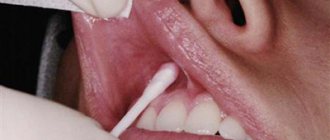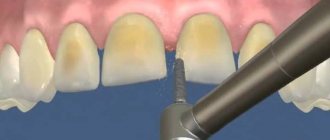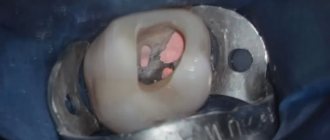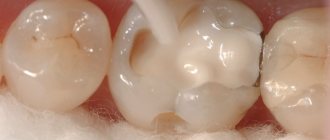Take the first step
make an appointment with a doctor!
Childbirth is an absolutely natural physiological act and usually does not require additional medical intervention, except for the assistance of a midwife. But in some cases, especially if the pregnancy was complicated by various diseases or there is an indication for a cesarean section, pain relief is simply necessary. Painful sensations in women occur during contractions, when the first stage of labor lasts and the cervix opens. They are associated with strong tension and contraction of the uterine muscles. Depending on the magnitude of a woman’s pain threshold, as well as on individual mental reactions, it can be either barely noticeable or unbearable.
37th week of pregnancy for baby
At the 37th week of pregnancy, the baby’s height is approximately 48 cm, and his weight is 2,600 g. Externally, the fetus is almost no different from a newborn; all facial features are developed, and cartilaginous tissue is clearly visible. The accumulation of subcutaneous fat at this stage of pregnancy makes the body contours softer and rounder. The baby’s skin gradually smoothes out, it is no longer as pink as in the previous weeks of intrauterine development, and the integument gradually becomes lighter. The baby's body is still abundantly covered with lubricant, but the amount of vellus hair decreases noticeably, vellus hair remains only on the shoulders and back, and in some babies it disappears almost completely.
This week the accumulation of fatty tissue continues. It reaches a maximum of 15% of the child’s total body weight. It is difficult to overestimate the importance of adipose tissue for newborns; it is this tissue that protects the child from overheating or hypothermia, since the baby’s thermoregulation system after birth is not yet sufficiently formed and continues to develop in the first months of the little person’s life.
At this stage, not only the volume of subcutaneous fat increases, but also the muscles and skeleton intensively develop. The child constantly moves his arms and legs. These unique workouts help increase muscle mass. The baby also makes rhythmic breathing movements that strengthen the intercostal muscles and diaphragm, preparing the respiratory organs for childbirth.
Pregnant woman at 37 weeks
As the due date approaches, pregnant women begin to notice the appearance of their precursors, that is, certain signs and changes that occur under the influence of hormones. A woman’s body is preparing to give birth to a child, progesterone gives way to the dominant role of the birth hormone estrogen, and the pregnant woman’s well-being changes.
From the 37th week, expectant mothers may observe the following changes:
- slight loss of body weight;
- reduction in abdominal volume;
- the appearance of training or “false” contractions and an increase in their intensity;
- discharge of mucus from the cervix.
The nature of the stool changes, it becomes weaker, aching pain in the lower back of varying intensity may appear, and the fundus of the uterus descends. The woman notes some signs on her own, others are observed by the gynecologist during a routine examination.
Precursors do not appear in all women. Some expectant mothers notice only some of the symptoms listed above, while others observe signs of impending labor not two or three weeks before the due date, but just a few hours. Both the appearance of precursors at the 37th week and their absence are normal and depend on the individual characteristics of the woman’s body.
This week, the female body is intensively preparing for the birth of a child. If the fetus is positioned correctly, head down, it gradually lowers, goes to the lower part of the uterus, presses it to the body and bends its limbs, intuitively taking the most comfortable position for passing the birth canal. The consequence of fetal movement is prolapse of the uterine fundus. The abdomen lowers, the pressure on the diaphragm decreases significantly, the pregnant woman can breathe easily, and the shortness of breath that plagued her in the previous weeks disappears. The pressure on the stomach also decreases, heartburn, a feeling of heaviness after eating and other unpleasant sensations disappear. Moving your baby can put pressure on your bowels and bladder. A pregnant woman at this stage often experiences the urge to urinate and may suffer from frequent loose stools. The reason for frequent bowel movements is not only the mechanical effect of the uterus on it, but also an increase in the content of estrogen in the body, hormones that promote the excretion of fluid. At the 37th week, the expectant mother can have bowel movements up to 3-4 times a day and at the same time observe significant dilution of the stool.
Causes of labor pain
According to many years of observations by doctors and data from physiologists, many women experience almost no pain during contractions and pushing, behave quite actively or can even sleep. This cannot be called a phenomenon, since the source of labor pain is based in the cerebral cortex and is often activated by fear or confidence that pain is about to come.
In fact, when psychological factors are eliminated, expectant mothers experience only a pulling sensation in the lumbar region, where the nerve node is located. It innervates all the endings responsible for the female internal organs. Also, unpleasant mild pain appears in the lower abdomen at the moments when contractions occur. The reasons that more than seventy percent of women experience severe pain during labor lie in the structure of the female body, a sedentary lifestyle and prejudice.
Scientists who studied the life of small peoples of the Amazon and the Far North, where signs of civilization are practically invisible, were amazed at the ease with which native women give birth to children. They work physically, quite hard, until the onset of contractions, then retire for a while and return with the child in their arms. There are no signs of suffering on their faces. This happens, according to researchers, due to physical activity and the lack of psychological impact on girls.
In the cultures of such peoples, the process of pregnancy and childbirth is perceived as a taken-for-granted act, to which no special significance is attached. And every girl knows from childhood that, just like her mother, aunts and sisters around her, she will become pregnant and give birth to a baby. Of course, if complications arise, the woman most often dies, but in those cultures death is an absolutely natural phenomenon that is not given much importance.
In civilized countries, girls are taught from childhood, on a subconscious level, from the TV screen and from the pages of books, that pregnancy and childbirth are fraught with many dangers and the process of giving birth to a child is accompanied by enormous pain. Added to this is the sedentary lifestyle of most women, overeating and chronic diseases. All these factors together create the preconditions for a painful birth.
Take the first step
make an appointment with a doctor!
38th week of pregnancy: development of the unborn baby
At the 38th week, the fetus is fully formed, so childbirth at this stage is no longer dangerous for both mother and baby. The weight of the fetus is about 3 kg, but this figure can vary significantly between babies; the weight depends on the individual characteristics of the mother and child, body structure and other factors. The body length of a newborn is approximately 50 cm.
All organs and systems at a period of 38 weeks are characterized by physiological and morphological maturity, they are completely ready for work. At this stage, the baby is preparing for childbirth, making breathing movements and preparing the intercostal muscles for breathing. The lung tissues are washed with amniotic fluid, which helps maintain the required level of surfactant covering the baby's lungs from the inside. All elements of the respiratory system are ready for use. With the first breath after birth, the alveoli begin to transfer oxygen from the air into the blood, gas exchange occurs, and the respiratory and circulatory systems begin to work intensively.
General anesthesia
This type of anesthesia is usually performed only in case of surgery, while the patient is under anesthesia, unconscious and does not feel anything. During the operation, food or liquid from the mother's stomach may enter the lungs, so the expectant mother is not recommended to eat or drink anything during labor. You can only rinse your mouth if you are very thirsty. If doctors do not know whether the patient has eaten food, then during a cesarean section a special tube will be inserted into her trachea to protect her lungs. General anesthesia usually does not affect the child’s condition, since the drugs are administered directly in the operating room and usually very little time passes.
Whatever the reasons why a woman resorts to the use of pain relief during childbirth, she must certainly be informed about all possible complications and side effects of the drugs administered and their effect on the child’s body. It is unacceptable to use any type of anesthesia without the consent of the patient if she is conscious. The exception is emergency situations that threaten the life of the mother.
Pregnant woman
The body of a pregnant woman continues to actively prepare for the birth of a baby, the content of estrogen rapidly increases, and the level of progesterone decreases significantly. Changes in hormonal levels help soften the tissues of the birth canal and cervix. Throughout pregnancy, the lumen of the cervical canal is closed by a plug of thick mucus, which protects the baby from infection, and the uterine cavity protects against the penetration of microorganisms hazardous to health. In the last weeks of pregnancy, the consistency of the mucus changes, it becomes more liquid and begins to gradually flow out. In some women, the mucus disappears gradually, while in other women in labor it comes off simultaneously. The discharge resembles colorless egg white in its consistency and appearance. Sometimes the mucus is pinkish, brown or yellow. The removal of the plug is painless; the woman may experience a slight feeling of discomfort in the lower abdomen. The removal of the plug may be signaled by more abundant vaginal discharge than during the entire pregnancy.
A woman should carefully monitor the color and volume of discharge, since too much colorless discharge may indicate not only the passage of the plug, but also be one of the symptoms of leakage of amniotic fluid. Indicator pads and amniotests or test strips will help determine the cause of the discharge. The pads are sold in many pharmacies and can be easily used at home. If leakage of amniotic fluid is confirmed, you should immediately consult a doctor.
After the mucus plug comes off, you should avoid visiting the pool and swimming in open water, as the risk of infection for the child increases significantly. It is also necessary to exclude sexual contact.
Epidural anesthesia
Advantages
Epidural anesthesia is absolutely safe for the child; its use completely anesthetizes and relieves sensitivity, which is why it is often used during a cesarean section. The patient remains conscious, but feels absolutely nothing, however, with the introduction of small doses of anesthetics, some women feel uterine contractions.
An epidural anesthesia procedure is performed under local anesthesia in the lumbar region, then the doctor uses a thin long needle to insert a catheter into the spine, more precisely into its epidural space, through which a dose of anesthetic is administered, if necessary. After the procedure, you need to lie down for fifteen minutes, during which time the medicine will begin to act. The catheter is not removed until labor is over; patients are usually not recommended to get out of bed and lie down, but there is also a mobile version of epidural anesthesia.
According to reviews of patients who have undergone childbirth with this type of anesthesia, pain is practically not felt, especially if an additional dose of medication is administered in a timely manner. However, there are strict contraindications for this procedure:
- Various neurological diseases;
- placental bleeding or any other origin;
- use of anticoagulants or bleeding disorders.
And finally, refusal of such a procedure is also a categorical contraindication.
Side effects
Typically, when a woman thinks about the side effects of this type of pain relief, she thinks about paraplegia, spinal nerve damage, or respiratory arrest. However, these complications are rather exceptions. The main danger is the long-term consequences: headaches, severe back pain that can last for months. Drug therapy for such pain usually does not produce results and it only goes away over time. While the medication is in effect, the patient may experience chills, trembling, decreased blood pressure, and difficulty breathing. You must tell your doctor about all the symptoms so that, if necessary, he can prescribe symptomatic treatment. Difficulty breathing occurs quite often during epidural anesthesia. This is a consequence of too large a dose of the administered drug and requires the use of an oxygen mask.
Take the first step
make an appointment with a doctor!
According to the latest data from medical studies, the use of epidural anesthesia in almost half of the cases led to various difficulties during childbirth. Since the woman in labor cannot control the birth process and does not understand when to push. In forty percent of cases, this led to protracted labor, forceps on the baby's head and traumatic brain injuries to the child. The high probability of ruptures of the perineum and vagina during such childbirth also does not add advantages to such anesthesia.
Approximately forty-five percent of women who undergo it experience this reaction to epidural anesthesia. This is quite a lot and before agreeing to such a procedure, you need to carefully weigh and think it over.
39th week of pregnancy: what happens to the fetus?
At the 39th week, the child’s weight reaches 3,100-3,500 g, and his height is 50-52 cm. Height and weight indicators are very relative and can differ significantly. The baby is rapidly preparing for the most important test in his life - birth, which requires endurance and significant effort. During this period of pregnancy, the size and weight of the child’s adrenal glands, that is, the glands of the endocrine system, which are responsible for the human body’s response to stress factors, increase. It is the hormones adrenaline and norepinephrine produced by the adrenal glands that help the child adapt as quickly as possible to new temperature conditions, tactile, sound and light impulses.
All the baby's senses are developed at 39 weeks. Within a few moments after birth, the baby can focus his gaze, he reacts to bright light and moving objects, many scientists claim that newborns distinguish colors and see the faces of parents and doctors. In the last weeks of intrauterine life, the baby's hearing is also fully developed; after birth, he reacts to loud sounds and noise. A newborn baby can identify the basic shades of taste, recognize sour, bitter, sweet and salty.
In the womb, the baby is in an aquatic environment that minimizes contact. Immediately after birth, the baby experiences many tactile sensations; unlike intrauterine life, he feels the touch of his mother’s hands and diapers, towels, dressings and other materials. Babies especially like the touch of skin to skin, so in a modern maternity hospital, newborns are always placed on their mother’s stomach even before the umbilical cord is cut. The child adapts more easily to the new environment and feels protected. Placing the baby out has not only a psychological aspect, since it promotes the colonization of microorganisms from the mother’s skin onto the skin and mucous membranes of the baby, and increases his immunity.
Pregnant woman
In the last weeks of pregnancy, the expectant mother strives to prepare her apartment or house as much as possible for the arrival of a new family member. Scientists call this sign of impending birth nesting syndrome. Many women observe signs of the syndrome from the thirtieth week of pregnancy, but at the 39-40th week nesting reaches its maximum point. Pregnant women strive to do general cleaning and repairs, re-stick wallpaper and purchase many new things that, in their opinion, are simply necessary in the house. After giving birth, many purchases cause confusion. The reason for this behavior is an increase in the level of adrenaline and norepinephrine in the body. These hormones are produced by the adrenal glands; they are necessary not only for the woman, but also for the baby to prepare for the upcoming birth.
40th week of pregnancy: how is the baby developing?
40 weeks – full-term pregnancy. The weight of a child born at this period ranges from 2,600 g to 4,400 g, and his body length is 48-53 cm. These indicators are very arbitrary, since at 40 weeks miniature babies weighing 2,600 g and real heroes are born, whose body weight approaches 5,000 g. The body length of newborns can also vary from 45 to 55 cm.
Most women give birth at 40 weeks. At this stage, the baby is completely ready for birth; it meets all the parameters of a full-term baby. Before birth, the baby presses its arms and legs closely to the body, bends its head as much as possible and presses against the exit of the uterus. This position makes it possible to pass the birth canal with the narrowest part of the skull. During labor, with each contraction, the child gradually moves downward; he does not move in a straight line, but makes helical-translational movements, as if screwing into the mother’s birth canal. As the newborn moves forward and his head descends completely, the cervix opens completely. This is followed by pushing, that is, contractions of the uterus that move the baby along the birth canal. The baby's head gradually appears, followed by his body. Childbirth is a complex mechanism that is aimed not only at the safe passage of the birth canal by the child, protecting him from accidental injuries due to increased pressure, but also at preventing ruptures of the woman’s soft tissues.
Drug pain relief
For drug pain relief during childbirth, analgesia and anesthesia methods are used. They differ in that during analgesia they use drugs that only partially reduce pain, while during anesthesia the patient is completely anesthetized, often with the loss of motor functions and consciousness.
Analgesia is provided both during contractions and during childbirth, and anesthesia is most often used during a cesarean section, that is, during childbirth. Epidural anesthesia occupies a special place in this classification - it is used both to relieve pain during contractions and for anesthesia during childbirth or during surgery.
Take the first step
make an appointment with a doctor!
Pregnant woman
The long wait to meet your unborn child is coming to an end; the 40th week of pregnancy is the last for most women. Every day the expectant mother’s anxiety increases, and the long wait affects her mood and well-being. Women strive to give birth to a child as quickly as possible, so that pregnancy and painful contractions become a thing of the past. Every pregnant woman dreams of meeting her baby, wants to hold him to her breast and stroke his tender head.
Many women, especially first-time mothers, worry that labor will begin unnoticed, but such cases are extremely rare. A woman feels the onset of labor, feels regular contractions that repeat at certain intervals and gradually increase, the time interval between them shortens.
Contractions may be preceded by prenatal rupture of amniotic fluid, which is observed in a certain percentage of women in labor. After the water breaks, contractions may be quite weak or completely absent. Regardless of the intensity of contractions, the release of water is one of the signs of the onset of labor and requires immediate contact with specialists and the woman’s hospitalization in a maternity hospital or hospital, since when the water breaks, the integrity of the bladder is disrupted and the risk of microorganisms dangerous to the baby’s health entering the uterine cavity increases. It is important that after the water breaks, the baby is born within a maximum of 10-12 hours.
A pregnant woman must properly tune in to childbirth, concentrate on the desired result and believe in her own strength, and complete the task intended for her by nature. The right psychological attitude and theoretical knowledge will help a woman become a mother, successfully go through all stages of childbirth and hold the long-awaited child to her heart.
Pain relief without drugs
So, if a woman is in good health and there are no complications during labor, then you can try to avoid painful sensations using various physiological methods: massage, water procedures, gymnastics and special breathing. All processes in the body are interconnected: if a woman is afraid, then a muscle spasm occurs, causing oxygen deficiency in the blood vessels and acute pain. Tension of the facial muscles causes a response spasm of the uterine uterus and delayed dilation of the cervix. Based on these data, when contractions occur, you need to relax and calm down, feeling that the pain is going away every minute.
Of course, it is not easy to immediately master such a technique, so during pregnancy it is necessary to attend special courses for expectant mothers, which teach the correct breathing tactics at different stages of childbirth, show basic relaxation techniques and exercises to relieve pain. Such courses can and should be attended with a partner, since many exercises are based on teamwork.
For physical exercise, you don’t need any special devices, you just need to listen to yourself and change positions more often, since physical activity makes labor easier and reduces pain. If the doctor has not prescribed bed rest, you need to walk more, preferably lying only on your side. Sitting is undesirable, as this creates pressure on the perineum.
Many women benefit from water procedures, but they can only be carried out if the water has not broken, since the risk of infection is very high. A warm bath with hydromassage is a great way to relieve tension and help you relax, but either a partner or someone from the medical staff must be present during the procedure. You can also use a shower cabin, directing streams of water to your back and lower abdomen. The water should be at a temperature of about thirty-six degrees so as not to cause bleeding. Aromatherapy, self-hypnosis and other techniques, including massage, are also quite effective in relieving severe pain. If desired, you can resort to a variety of techniques to minimize pain, but before using them, you should definitely talk with the doctor leading the birth.










